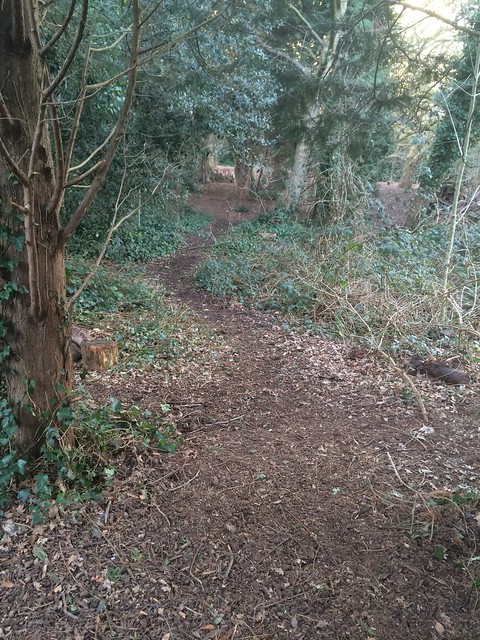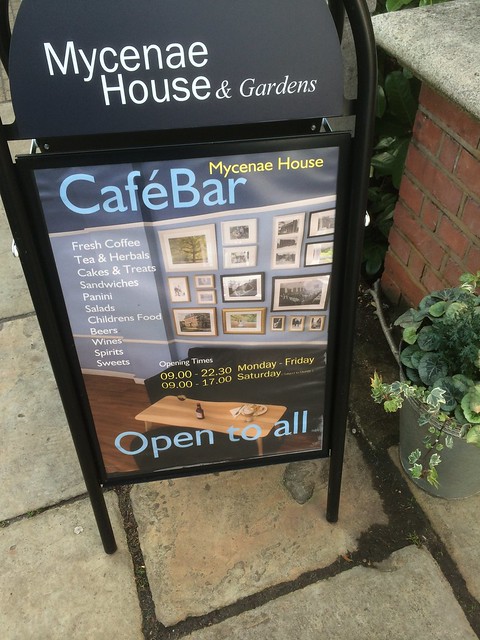Tags
aliens, Arecibo Message, classroom activity ideas, communication, computational thinking, creativity, science, Slow Scan Television - SSTV, technology
tl;dr: Invent something like a Slow Scan TV setting that can take an audio signal of the 1974 Arecibo Message (recreated for human audibility), parse it into 73 lines and display the resulting image. Convert this into a school project (perhaps using a Raspberry Pi, Micro:bit or Arduino?). Doesn’t have to be sonic – could also be done with a light sensor or indeed anything that can distinguise ON from OFF or 1s from 0s.
My idea (detailed below in section 3) was partly inspired by a brilliant talk my colleague Prof Paul Curzon gave at the ICT for Education seminar last Tuesday (hosted at QMUL), showing how you can take one Pixel Puzzle* (colour by numbers, each pixel in a 16 x 16 mosaic grid has a numbered colour, when coloured an overall image emerges) and use it to teach a whole lot of computer science (and art, and other subjects). He mentioned that the Romans could carry instructions for mosaics, so the info could be posted around the Roman Empire and a faithful copy reproduced.
The idea was launched by coming across an old photo from 2014 that I took at an event at the BFI when Prof Brian Cox and Dr Adam Rutherford were chatting about the Arecibo Message at 40 alongside a screening of the film Contact.
1. The Arecibo Message
In November 1974 Frank Drake and pals (including Carl Sagan) used the Arecibo antenna to ping, via radiowaves, a 1,679 bit sound message into space. The sound consisted of two notes at two different pitches: one for 1s, one for 0s. It was more PR than actually intended to be read or even understood by aliens of course. The idea was that the receiving alien would clock that 1,679 is a semi-prime and eventually work out that if you split it into 23 columns of 73 lines you’d get what is essentially a pixel puzzle.
There are several layers of decoding here – first you’d need to have to know how to receive radio transmissions, need to recognise that the transmission was intentional and not just ‘static’, recognise that there were two distinct signals, need to know how to split the stream into the right number of columns, need to convert the two sounds to a visual representation (black for 1, white for 0 for example) and then how to make sense of the final image. A bit of a tall order! I would never in a million years work this out, so if I was one of top minds on this alien planet that message would never be decoded! (See my 2009 post: What if aliens just aren’t clever enough).
The original message was transmitted at frequencies not particularly easily distinguished by humans (recreated example, embedded below)…
…but people have attempted to recreate an simpler version of the message (an example here, and embedded below).
2. Slow Scan TV (SSTV)
I discovered this a few years ago at a Dorkbot London event and it slightly blew my mind – I wrote about it here “Playing with Slow Scan TV – sound to images“.
SSTV lets you transmit images by sound of various frequencies / pitches. Each pitch corresponding to a particular colour – you can get amazing clarity. This tech was used by the Moon landing astronauts to relay television pictures back to Earth. Russian astronauts on the International Space Station periodically transmit images to Earth as the ISS passes over and ‘ham’ (amateur) radio enthusiasts (or anyone with a £30 radio that can pick up ~145.8MHz) listen in to the audio and capture the image, using a £3 phone app or free online software.
The audio (easily perceived by human ears but unlikely to be easily distinguished) sounds like modem sounds / dialup internet. Here’s one I made earlier. If you happen to have the CQ SSTV app on your phone set to Scottie 2 then play the below into your phone’s microphone and a picture will emerge in 1min 14sec.
When the ISS passes overhead nerds on the ground can pick up the transmitted signal in real time, with the (usually slightly fuzzy) image emerging line by line.
Above: it’s all hiss until ~20s then you hear the ‘incoming’ chirrup, then straight into the sonically transmitted message – alongside it the phone app converts to picture.
SSTV also emits a ‘stop, new line’ signal at the end of every line so that the decoder knows when to move the ‘cursor’ to the next line. You can hear a periodic pulse in my sound file above which is the signal to sweep to the next line. As far as I’m aware the Arecibo Message didn’t have this mechanism, relying on the assumed mathematical know-how of anyone receiving it to work out how it should be split.
3. My brilliant wheeze
I’ve no idea if this is feasible but here goes. It’s an idea for a schools project to celebrate the 50th anniversary of the Arecibo Message.
a) An audio version of the binary signal, or a simplified recording like the one above but it could be any sound file that transmits the same information.
b) A device that can pick up and record the audio signal and recognise the two distinct pitches…
c) …and can chunk it into 23 columns and – ta-da – display the resulting recreated Arecibo Message image
d) An educational pack that includes instructions on how to set this up, perhaps with brief forays into how SSTV and ham radio have been used, how and why we use radiowaves to communicate, stuff about the electromagnetic spectrum, and of course all the computer science education related to the use of pixel puzzles (see below) plus data transmission, maybe linked to alien life / intelligence and if the schoolkids are of a suitable age a screening of Contact. Ethics of contacting aliens (see Vox article in Further reading). Could even talk about Morse Code as a means of communication by a string of data. Originally it was intended to be read visually but operators realised they could decode the audio signal so transcription to paper was no longer necessary.
*4. More about Pixel Puzzles
These are colouring in puzzles aimed at primary school aged kids, some for early years, some for the older end of primary. These are a popular activity at events we run and we (where I work) have several that can be downloaded and printed at home, or done on a computer, all free.

You can treat them just as a colouring activity or you can also talk about how computers can store images as bitmaps, or as a string of numbers etc, data representation. You can also consider how best to colour them in – go through line by line and colour each different pixel as you come across it, or do a search for all “5” pixels and colour those in then move onto another number (search strategies). Also an example of decomposition (breaking something down into its component parts). A pixel puzzle is compressed data displayed as numbers (you could share it as just a string of numbers and tell the person how to map it onto a grid for example). You could link it to another subject too – e.g. we have minibeasts puzzles and a Roman mosaic one.
5. Further reading
An Arecibo Message related classroom activity, giving the kids the binary message (visually) and getting them to make sense of it: http://journeythroughtheuniverse.org/downloads/Content/Neigh_G9-12_L3.pdf
Scientists are asking kids to design our planet’s next message to aliens (2019) Vox – considers the question of whether we might put ourselves in danger if we try and communicate with aliens.
Raspberry Pi’s space-themed projects including one that lets you track where the ISS is.
School children in Kent speak to astronaut aboard International Space Station (2023) iTVx – thanks to Hilderstone Radio Society, a local amateur radio club.
How many people are in Space right now? https://www.howmanypeopleareinspacerightnow.com/ – at time of writing (Monday 29 April 2024) it’s 10!
6. Things I’ve found since publishing this post
The message of Arecibo in Scratch (2018) Istituto Nazionale Di Astrofisica – a variation of my suggestion above. Scroll to the end and click on the green flag to see the program in action.
Drake’s Cryptogram (undated) David Darling’s website – a 1961 shorter early variant of the Arecibo message sent by Frank Drake to fellow nerds after a conference to see if any of them could work it out. One did.
Here’s the Arecibo Message, in colour: https://apod.nasa.gov/apod/ap200503.html










